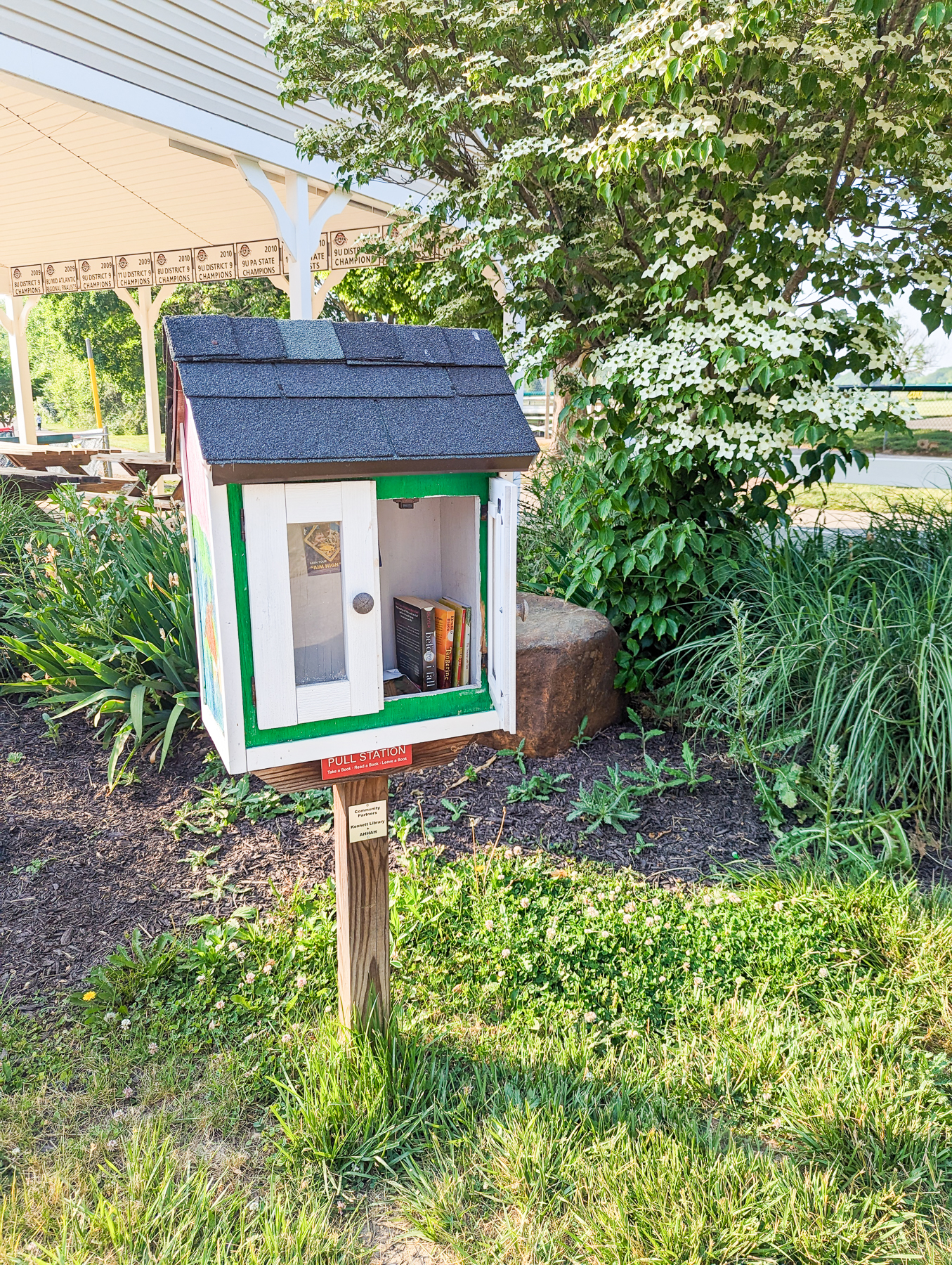15+ Benefits of Family Biking For People & the Planet
Can you imagine if bicycles were the main mode of transportation for your family? If you live in the United States, you probably scoff at this idea. But in other parts of the world, cities are designed differently and built for bikes before cars. Read on for more about the benefits of family biking and how one family of five relies exclusively on bicycles (and public transit) for their local transportation.
This post is part of our series on showcasing family biking as a regular mode of transportation and how it can benefit both people and the planet.
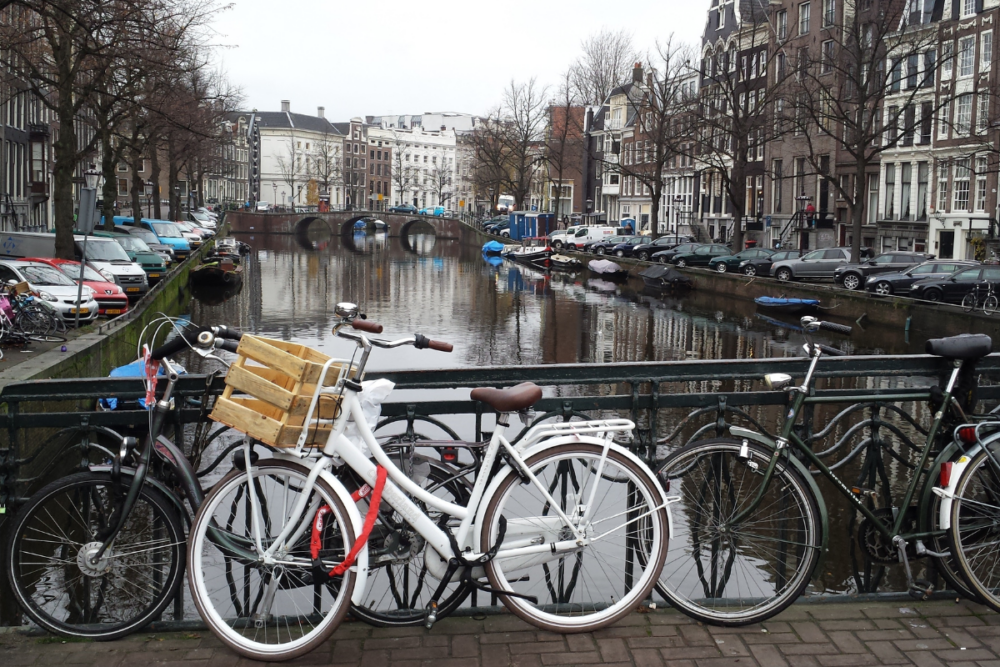
Growing up, I remember riding my bicycle to my friends’ houses when I was maybe ten or twelve years old. They lived a mile or so from my house, and I could ride there on backroads and sidewalks. It was long enough ago that I didn’t even wear a helmet. Oops. Now we know better, but… it is what it was.
Among many things about those bike rides, I remember how independent I felt. It was good exercise. It gave my parents the freedom of not having to drive me all around town to meet up with friends during summer vacation or on the weekends. It made so much sense (and I lived in the heart of suburbia, definitely not an urban area).
Biking Infrastructure is Poor in Many Places
Where I live now, somewhere in the woods not far from horse farms but also a skip, hop, and a jump from Target and Whole Foods (on windy back roads), my family and I can’t safely ride our bikes much of anywhere. My kids surely aren’t riding their bikes to friends’ houses, even if they live close by. But despite Americans’ distaste for cycling, I think more people could ride bikes for short errands and visits to friends than realize.
Unfortunately, we’ve become wrapped up in a culture where biking is wildly uncool (for the most part) and woefully unsafe in a lot of places because our transportation systems have been designed distinctly for cars and trucks. There are few dedicated bike lanes, and cars whizzing past cyclists at every corner have led to rises in car-rider fatalities and pedestrian fatalities and injuries.
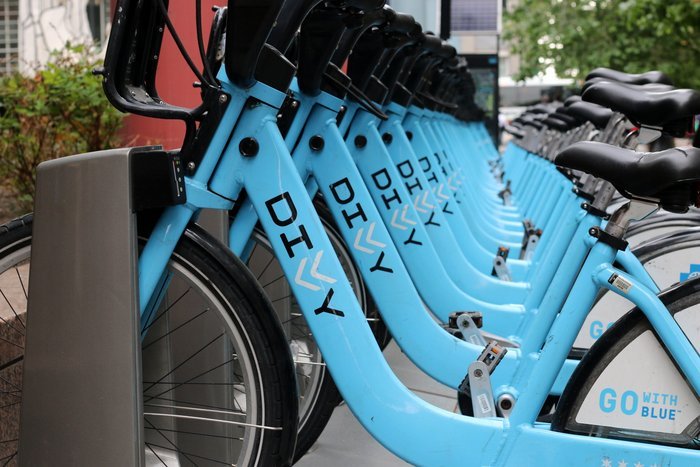
Climate Change Makes Biking Even More Important
With rising temperatures and nearly a quarter of emissions in the United States coming from vehicles, it’s high time we make bikes cool again and cycling to and fro a safe and enjoyable endeavor. Many other cities around the world have shifted their car-centric urban designs to prioritize cyclists and pedestrians, even when they were initially designed for cars, and it’s arguably a good move for the people, the planet, and their economy.
Due to where we live, I can’t ride my bike all that much. But I want to help others see that opting for bicycles can be a great alternative, even if we just choose to use them instead of our cars on some occasions. We’re not aiming for perfection at every turn; swapping a few bike rides for car rides is a great place to start.
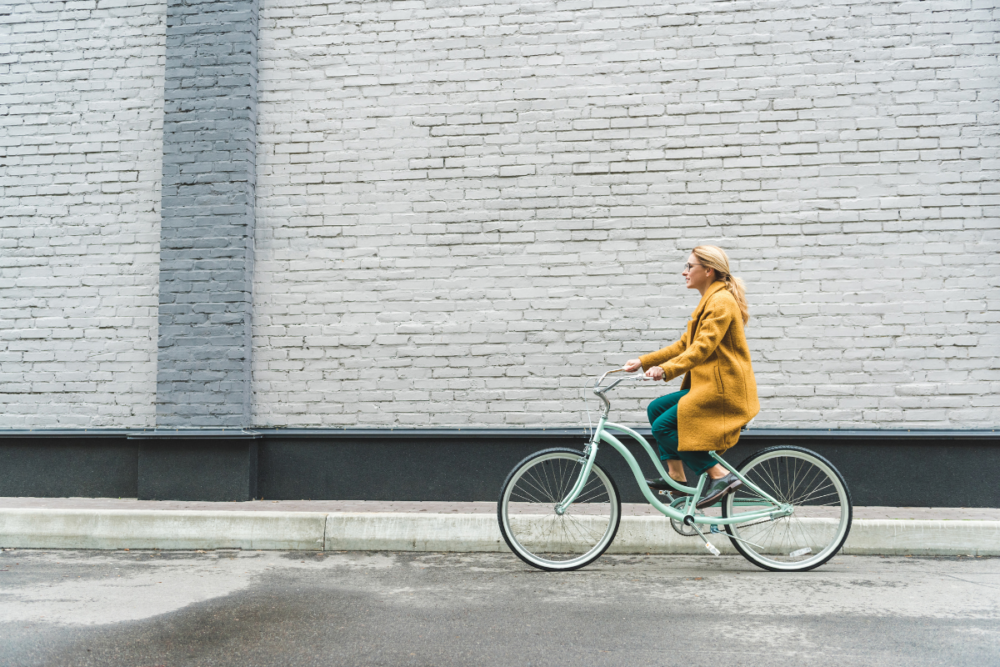
National Bike Month in May
Every May, biking enthusiasts across the country come together to celebrate National Bike Month. Established in 1956, this event promotes the many benefits of cycling and encourages more people to try biking.
In that regard, we’ve got an upcoming series with one of our newest contributors, Robyn Chevalier Hall who grew up in California but has spent the last many years living in Switzerland and the Netherlands without a car. A couple of years ago, she and her partner invested in an e-cargo bike for their family of five. While they have other traditional bikes, they have no car and periodically rely on public transit, but they primarily get around the city on their bicycles (even with a newborn and two young children in a relatively cold climate).
In the coming weeks, Robyn is going to tell us all about what her daily life looks like without a car, different options for family bikes, how she runs errands, does school drop-off, and more on her e-cargo bike with kids. I can’t wait for her to show you that ditching our cars (or at least some of them) for a bicycle or e-bike may not be as impossible as you think.
In the meantime, let’s dive into the benefits of family biking for a few of the basics to maybe… just maybe… convince you that the family biking life is more feasible than you might think. If you and your family love biking just for fun, that’s great! And if you can incorporate biking into your everyday routine as a transportation alternative as well, that’s even better!
Benefits of Family Bike Riding For People & the Planet
Embarking on family bike rides – whether for transportation purposes or just pleasure – not only provides a fun and engaging activity for everyone, but it also offers numerous physical and mental health benefits. By choosing to spend quality time together outdoors, you are fostering a sense of camaraderie, while prioritizing your family’s well-being and overall happiness.
When you cycle together as a family, you’re actively promoting a healthy lifestyle that can have lasting positive effects on your children’s development. The health-enhancing aspects of cycling include:
- Improved cardiovascular health
- Improved range of motion in joints
- Strengthened bones
- Better flexibility in your lower body
- Promotion of weight loss
- Enhanced balance, posture, and coordination
- Positive effects on mental health, such as mood improvement and reduced stress
By incorporating family cycling into your routine, you contribute to a healthier future for yourself and your loved ones, create lasting memories, and establish a deeper connection with nature and your community.
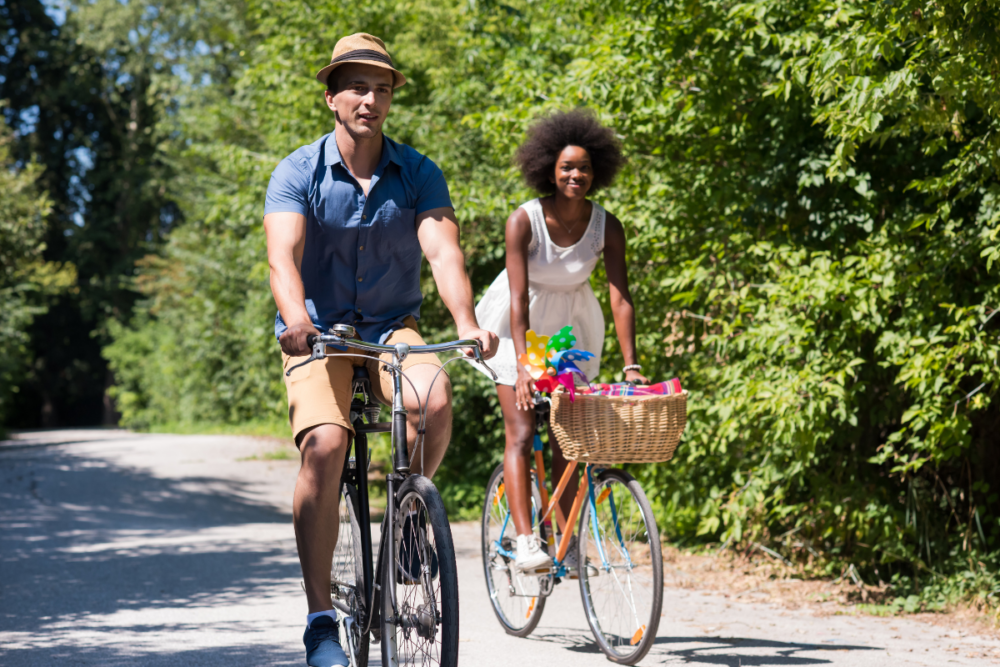
Physical Health Benefits of Biking
While cruising around in cars does little good for our health (and often has many serious negative consequences), bike riding for both fun family outings and everyday transportation has lots of physical health benefits. There are many environmental choices we can make that are both good for the planet and good for us, and biking instead of driving is a great example of this.
The Pedestrian and Bicycle Information Center highlights reports and studies that show people who bike to work “have a 20% reduced rate of early death and a 24% reduced rate of death from cardiovascular disease compared to those who drove.” I suspect part of this relates to the fitness of people before they start biking to work, but it’s a great way to incorporate fitness into a busy day without feeling like it’s an extra burden on top of all the other commitments on a calendar.
Cardiovascular Fitness
When you and your family participate in regular cycling activities, you can improve your cardiovascular fitness. Cycling is an aerobic exercise that helps increase your heart rate and improve circulation, which can lead to better heart health.
Muscle Strength
Cycling is effective in building motor skills and muscle strength, particularly in the lower body. Biking helps strengthen muscles in your legs, hips, and glutes. Moreover, cycling also works on the muscles in the arms and core, providing a complete body workout. I knew it was a leg workout but it is surprising how much it benefits our whole bodies.
Weight Management
Biking can be a fun way for you and your family to manage your weight effectively. Cycling helps burn calories, which can contribute to weight loss or the maintenance of healthy body weight. The intensity of the exercise and the duration of the ride determine how many calories you burn. Particularly as we face a childhood obesity epidemic, incorporating more family activity in daily lives has so many benefits.
Mental Health Benefits of Biking
Driving can be so stressful! I can’t count the number of times I’ve been driving with the boys in the backseat while they bicker to no end. And don’t get me started on traffic! There’s plenty of research to validate that road traffic has all sorts of negative health implications.
Biking, on the other hand, offers numerous mental health benefits for you and your family, making it a fantastic activity to enjoy together. And those who commute by bike actually enjoy their commute (few car drivers can relate). By incorporating family biking into your routine, you can harness these mental health benefits and create lasting memories with your loved ones.
Reduced Stress
When you participate in cycling, your body releases feel-good chemicals like serotonin and endorphins. These are natural stress-relieving chemicals that can help to alleviate symptoms of depression and anxiety. These powerful compounds can help you combat everyday stressors and leave you feeling more relaxed and refreshed after every ride.
Additionally, biking outdoors allows you to connect with nature and your local neighborhoods. Unlike cars, which create a physical barrier between our bodies and the communities in which we move around, biking brings us closer to the people and places we pass by. Immersing yourself in the sights and sounds of your surroundings further reduces stress levels and helps build more connection with and investment in our local communities.
Improved Mood & Confidence
For children, outdoor play and physical activity are essential components of healthy emotional development. Biking provides an opportunity for kids to enjoy fresh air, explore their surroundings, and develop a sense of independence and accomplishment (remember the feeling of independence when I took those little rides to friends’ houses in the summer?). This can lead to increased self-esteem and improved mood, both for children and the entire family.

Environmental Benefits of Family Biking
Biking with your family is not only a great way to bond and stay healthy, but it also has a significant positive impact on the environment.
Reduced Emissions from Biking
One of the primary environmental benefits of biking is the reduction of harmful emissions relative to cars. Riding a bike does not use any gasoline which means you’re not releasing pollution into the atmosphere. And e-bikes use far less electricity than electric cars. While electricity is a better environmental alternative than gasoline, it’s best when we can move around without any non-human energy generation at all.
By choosing to cycle, you’re cutting back on fuel consumption and reducing your carbon dioxide emissions, which contribute to climate change. In fact, moderate increases in bicycle use each year could save an estimated 6 to 14 million tons of CO2. The University of Montana points out that someone riding a bike can travel 960 miles on the amount of energy that goes into moving a car 20 miles. And the Pedestrian and Bicycle Information Center notes that researchers found that people who bicycled every day had 84% lower carbon dioxide emissions from all daily travel than non-cyclists.
Decreased Traffic Congestion from Biking
Family biking also benefits the environment, particularly when used for everyday transit, by reducing traffic congestion. As more people choose to commute by bicycle, we have fewer cars on the road, which leads to a decrease in emissions from idling vehicles. This not only cuts down on fuel consumption but also improves air quality by reducing emissions.
Further, less traffic congestion reduces demand for highway expansion, the development of which leads to more environmental degradation from industrial development, intrusion into natural areas, and destruction of neighborhoods. Historically, highway expansion has been disproportionally harmful to people who are already marginalized in our societies, so traffic congestion and highway expansion are issues of environmental justice as well.
Manufacturing & Industrial Costs of More Cars
Cars and the related infrastructure to support them have massive environmental costs associated with them. Vehicles require lots of steel, rare minerals, and other resources to build them as well as a lot of energy to manufacture and transport them for sale. Each of these manufacturing elements has its own significant carbon footprint and environmental degradation factors.
Bikes, on the other hand, require far fewer natural resources to make and maintain. If more people opted to get around via bicycles instead of cars, we could reduce deforestation for resources like rubber, mining for metals like cobalt, and carbon footprints from manufacturing, just to name a few of the environmental benefits related to the transportation tools themselves.
Related Reading: Sustainable Family Travel | Flying vs. Driving vs. Staying Home
Habitat and Open Space Benefits of Biking
Cars require far more parking lots, roads, and other paved spaces relative to bikes. One can typically store 6-15 bikes in the space required to park one car! Imagine how many more parks and beautiful, natural spaces we could have if we cut down on paved transportation areas by 6-15x.
The asphalt and construction of these spaces have major environmental consequences. Building infrastructure for vehicles (like streets and parking lots) increases the impervious surface of an area, which can exacerbate stormwater runoff, urban flooding, and the urban heat island effect.
Furthermore, we experience a loss of habitat and green space when new roads, extra lanes, and parking lots overtake our cities and communities. Habitat destruction creates less space for other creatures, harms biodiversity, and reduces the number of trees that produce oxygen, intake carbon dioxide, and provide shade to keep urban spaces cooler.
Alternatively, when you and your family choose to cycle, you’re actively taking steps to reduce your environmental footprint and preserve spaces threatened by further expansion of roads and highways. You’re not only contributing to cleaner air and reduced greenhouse gas emissions but also easing traffic congestion, conserving energy, and protecting more open natural spaces for humans and all living things on the planet.
Supporting Local Biking Infrastructure
When you choose to bike as a family, you’re directly contributing to the growth and sustainability of local biking infrastructure. Your increased use of bike lanes, trails, and parks demonstrates a demand for these facilities in your community, encouraging local officials to invest in expanding and improving such amenities.
By advocating for more bike-friendly infrastructure, your family helps in making the community more accessible, safer, and enjoyable for all residents. Additionally, investing in non-motorized infrastructure can lead to cost savings for communities, as bicycle paths and complete sidewalks are often less expensive than building new roadway infrastructure.
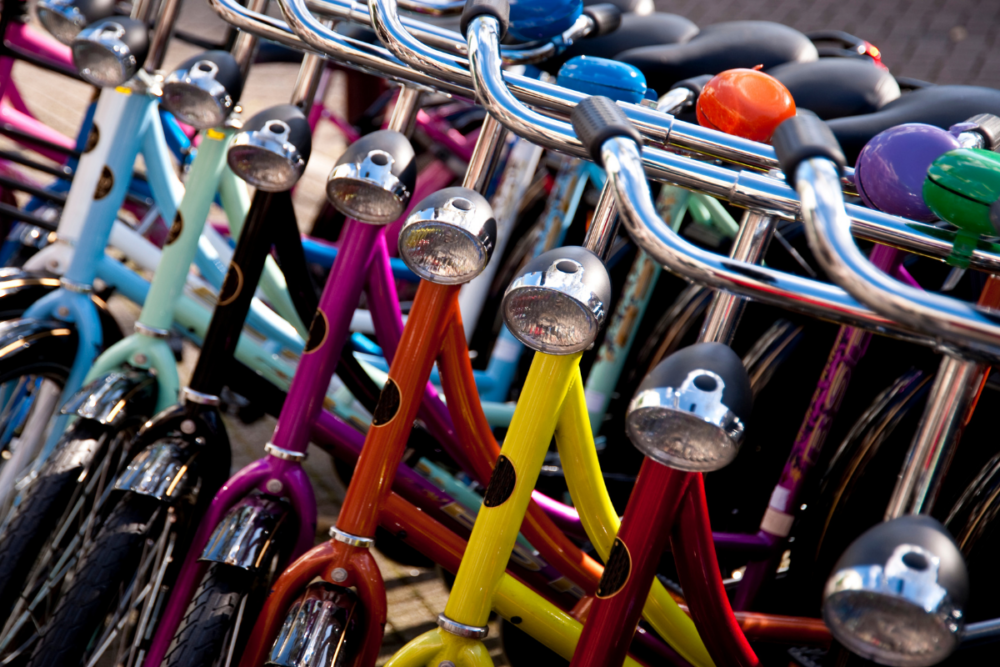
Financial Benefits of Family Biking
Car ownership is very expensive, and much more expensive than owning and using a bike. While the infrastructure in many places isn’t conducive to biking, creating more accessible biking lanes, paths, and spaces provides saving opportunities for families at all income levels.
Bikes are Less Expensive Than Cars
First and foremost, bikes are less expensive than cars. Creating more biking infrastructure and making biking a more accessible mode of transportation is especially helpful for families who can’t afford to own a car but could invest in a bike. Giving more people access to useful transportation at an affordable price point is a great example of an environmental justice solution that is good for people and the planet.
Reduced Transportation Costs
Beyond the initial investment, choosing to bike instead of using a car for short trips helps save money on variable and recurring costs like fuel, car maintenance, car insurance, and parking fees. In fact, the average American spends about $2,600 per year on commuting expenses, so biking can help reduce that amount significantly.
Additionally, bikes are generally more affordable to maintain than cars. This means you can enjoy substantial long-term savings by incorporating biking into your family’s transportation routine as car maintenance expenses decrease.
Lower Healthcare Expenses
Biking as a family not only improves your physical fitness but also contributes to lower healthcare costs. Regular exercise, such as cycling, helps prevent obesity, heart disease, and other health issues. A healthier lifestyle translates to fewer medical expenses and can even lower your health insurance premiums.
Moreover, the mental health benefits of biking can’t be overlooked. Cycling has been linked to improved sleep, a boost in memory, and a greater sense of accomplishment. By maintaining your family’s mental health through cycling, you may save on therapy costs and other mental health-related expenses.
Teaching Life Skills
Family biking provides an excellent opportunity to teach children important life skills. Car riding offers some life skills, like wearing a seat belt and following road signs (if they are paying attention), but these skills are much more relevant when biking, especially when the child is on their own bike and responsible for their own movement.
Responsibility
Biking together as a family can help foster a sense of responsibility by encouraging kids to take care of their bikes, helmets, and other equipment. Regular maintenance and cleaning of bikes can help instill a sense of ownership and self-discipline in children. In our house, we struggle to help our kids remember to take good care of their things. When their transportation becomes dependent on a functioning bicycle and safety gear, however, they have more skin in the game to ensure it stays in good condition.
Safety Awareness
Biking offers an excellent opportunity to teach children about road safety and traffic rules. As responsible cyclists, they learn the importance of obeying traffic signals, using designated bike lanes, and knowing the appropriate hand signals. Moreover, you will emphasize the value of always wearing a helmet and using reflective gear for visibility. These skills will not only benefit them while biking but also contribute to their overall safety awareness in different situations.
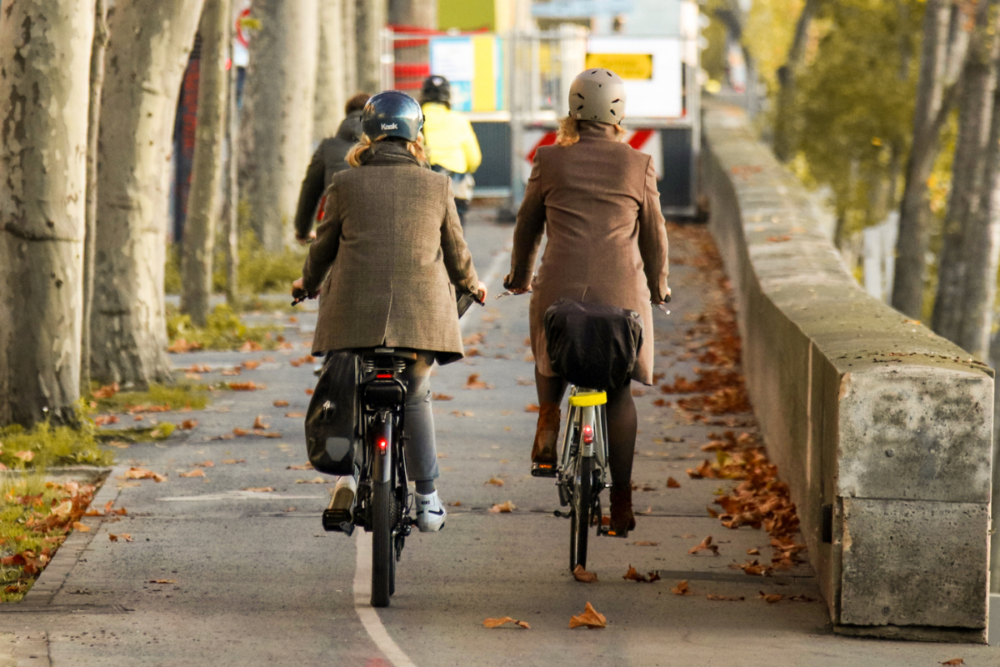
Tips to Transition to More Biking as a Family
As you aim towards integrating more bicycle rides into your family routine, the following tips can help make the transition smoother and more enjoyable for everyone:
1. Choose beginner terrain: Start with your child’s comfort zone, which is likely a flat, paved path, away from traffic, and a few miles long. In time, you can gradually increase distance, incline, and explore unpaved trails.
2. Prioritize safety: To ensure everyone’s safety, it’s important to follow biking safety guidelines provided by the National Safety Council. This includes always wearing helmets and other appropriate safety gear while riding, using proper hand signals to communicate with others, learning how to navigate various types of roads and paths, and respecting the rules of the road.
3. Make it fun and interesting: Plan rides that include stops at parks, playgrounds, or other family-friendly attractions. This helps keep the experience enjoyable and motivates everyone to continue biking together, especially as children are learning to become more proficient bike riders. When bikes are used for errands, you may not have time to incorporate these types of stops, but it’s a great way o spend time together and enjoy the highlights of your community when it’s accessible.
4. Invest in quality gear: Research and select bikes and equipment that are suitable for each family member’s age, skill level, and preferences. Investing in quality gear will ensure a better riding experience and encourage more frequent family bike outings. Robyn will be sharing lots of ideas about the right gear for all kinds of weather.
5. Establish a routine: Schedule regular family bike rides, whether it’s a weekend outing or a daily trip to school. By maintaining a consistent routine, you will develop the habit of biking together and help your children know when to expect transit to happen on bicycles. Chances are they’ll really like it!
Related Reading: Can You Take a Family Roadtrip in an Electric Vehicle?
Get the Right Gear for Family Biking
Choosing the right gear for family biking is essential to ensure safety, comfort, and enjoyment during your rides. When it comes to selecting equipment, it’s important to consider your unique family needs and preferences.
Best Bikes in Your Budget
First, invest in quality bikes that cater to all family members. Make sure each bike is the appropriate size and type, as proper sizing and functionality are crucial for a smooth ride. Additionally, consider options such as trail-a-bikes for younger or less skilled riders, which can help them build confidence and cycling skills at their own pace.
There are lots of options as well for secondhand bikes. Online secondhand marketplaces have lots of bikes, but it also might be a good idea to start your search at a local bike shop where they can direct you to the best bicycles for each person in your family, especially if you plan to ride regularly.
If you plan to bike often when you don’t want to get sweaty, e-bikes may be another option worth checking out. They can help you travel farther distances without feeling exhausted after the ride. They’re especially helpful for parents carting children on day-to-day errands or those carrying heavy loads regularly.
Sign Up For Bike Rentals
If you’re not ready to invest in a bike, you could also opt for a bike share rental program. Most of the programs I’ve seen don’t have kids’ bikes or bikes with seats for small children, so it may not be the most suitable option if you have young children with you. But if you have older children or no children, a bike-share program could be a great option to start swapping short car trips for a quick ride around city streets to run errands and commute to work.
Biking Safety Gear
Helmets are a must-have for all family members, as they can significantly reduce the risk of head injuries in case of an accident. Remember to choose helmets that fit snugly, are comfortable, and meet the required safety standards.
Along with helmets, consider investing in other protective gear such as gloves, knee and elbow pads, and bright or reflective clothing. These items can help protect your family during rides and make it easier for other road users to spot you, enhancing overall safety.
Here are several additional gear options to enhance your family biking experience:
- Child bike seats: Ideal for younger children who are not yet ready to ride independently.
- Bike trailers: Provide a comfortable space for little ones to relax while you pedal.
- Water bottles or hydration packs: Essential for staying hydrated during your ride.
- Bike locks: Keep your bikes secure when you need to leave them unattended.
- Panniers or On-Bike Bags: Carrying totes that connect to your bike to help you carry everyday items like groceries or other supplies.
All-Weather Biking Gear
When we lived in Chicago and walked everywhere, having the right gear made all the difference, and the same is true when biking. Investing in a raincoat or warm jacket, water-proof bags to carry things with you, and other similar weather-related gear can make biking so much better. What you need will depend on the weather and climate where you live and ride, but it’s well worth the investment if biking is a regular mode of transportation.
Related Reading: 6 Tips to Find the Right Fit When Shopping Secondhand Online
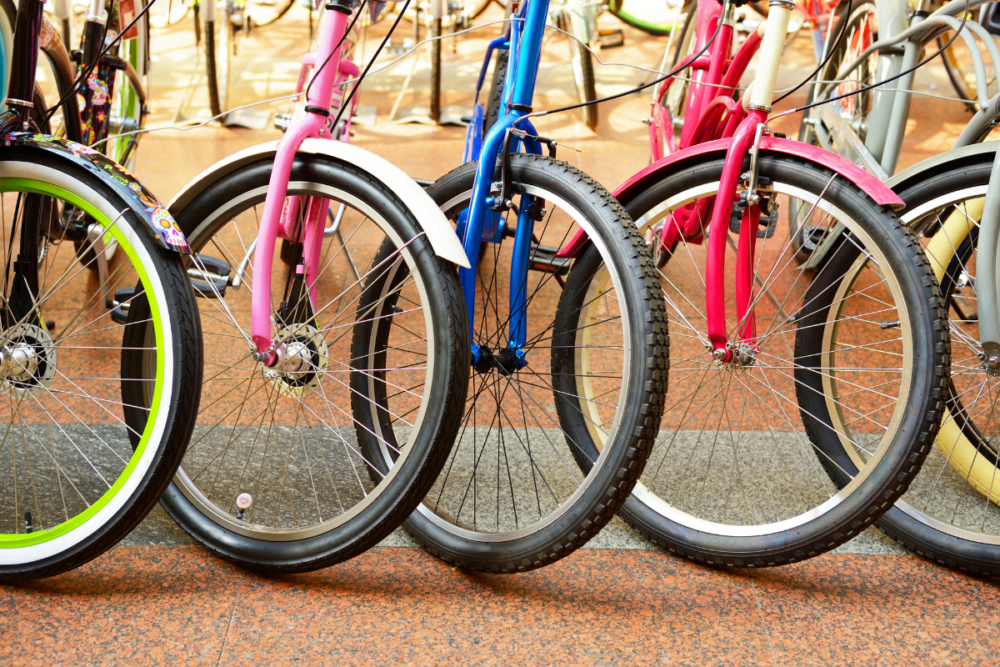
Cities and Countries with Good Biking Infrastructure
Many places in the United States have pretty dismal biking infrastructure, though some cities are making a concerted effort to be more bike-friendly for their residents. There are other cities, however, in other countries that have an amazing infrastructure for cyclists, even if they were at one point designed first for cars. Just because a city is car-centric now doesn’t mean it has to stay that way going forward.
Copenhagen consistently ranks as one of the top bike-friendly cities in the world. The Danish capital boasts an extensive network of bike lanes, cyclist-friendly traffic lights, and a cycling culture that accommodates riders of all ages and abilities. Biking in Copenhagen is an enjoyable and practical way for your family to explore the city together.
Amsterdam is another city renowned for its cycling infrastructure. The Dutch capital features dedicated bike lanes, several bike rental shops, and numerous cycling events throughout the year. Amsterdam’s flat terrain and short distances make it an ideal destination for family biking adventures.
San Francisco, one of the most bike-friendly cities in the US, showcases high-quality cycling facilities and a solid safety record. The city’s compact layout, coupled with its iconic hills, offers a unique and exciting biking experience for you and your family.
These cities, especially those where many people commute and run errands by bike regularly, can serve as inspiration for other cities to follow suit. We can learn from their examples (and their mistakes) to transform more cities into bike-centric areas. It’s like this will start and be most fruitful in urban areas, but those are also often the area with the greatest congestion, most idling, limited green space, and shortest trips to be more easily replaced by cycling.
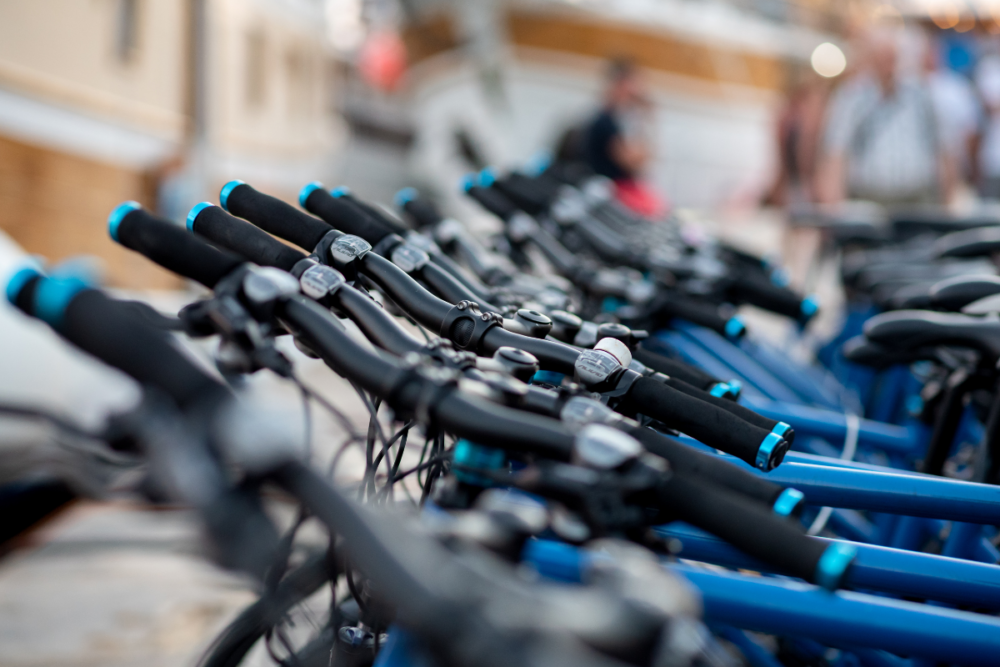
Economic Benefits of Bicycling
We live in a capitalist society, so at the end of the day, money talks. Maybe I should have started with this, but I’ve saved the most compelling reason (for investors and market muses) to consider the future of bike-centric communities.
Research shows that investments in making cities more walkable and bike-friendly benefit the local economies, communities, and the local government. A report from Smart Growth America lists just some of the benefits including:
- Increased sales for local businesses due to higher foot traffic
- New job opportunities
- More affordable transportation
- Averted healthcare costs from healthier residents
- Increased property and sales tax revenue
- Reduced utility infrastructure expenses
- Reduced cost of delivery services like school busing and emergency response
These are pretty compelling reasons to make our communities more walkable and bike-friendly. In his book, Walkable City, the author Jeff Speck, lays out his arguments for why a walkable city is good for the environment, local economies, and community well-being. (If you haven’t read it, I highly recommend it.)
I know a book about civil engineering, sidewalks, and bike paths might seem like a snooze, but it’s super interesting and filled with tangible ideas about how to make our cities more enjoyable for citizens and, simultaneously, reduce carbon emissions and revitalize the environmental health of urban centers.
Climate Change Requires Community Change
As climate change continues to impact our communities, we have to make changes. Change is uncomfortable, but sometimes, change ends up being really great. In the case of making our cities more bike-friendly and having more people use bicycles as a primary or frequent mode of transportation, I think it’s a change we will come to love.
Other cities have led the way and the results have been great. Bike-centric cities are good for people and the planet. Do you use your bike for regular transit? What tips do you have for those who want to make biking a bigger part of their lives?
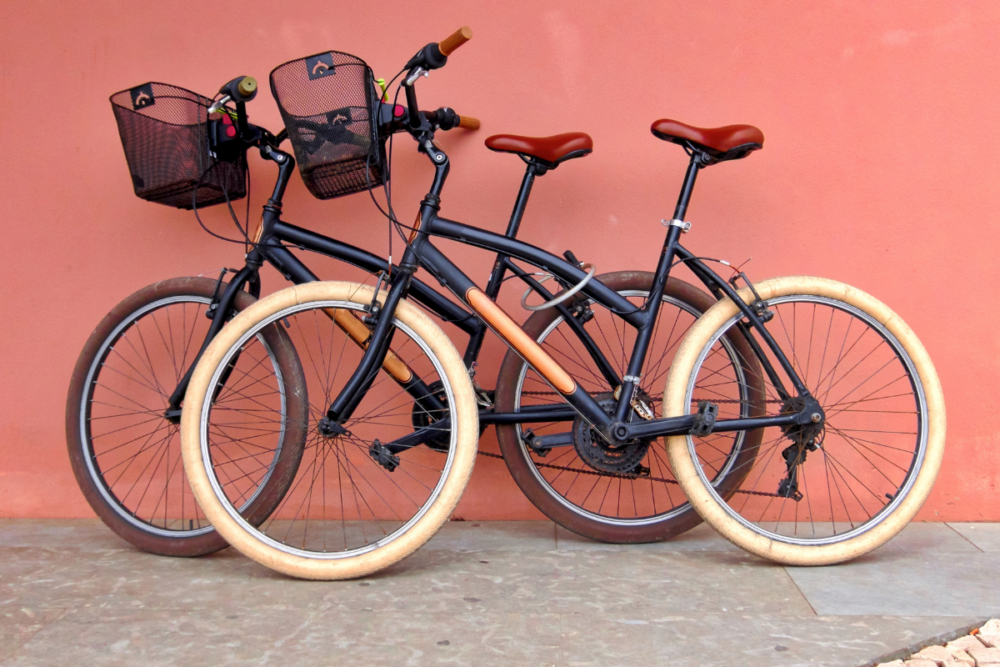

Jen Panaro
Jen Panaro, founder and editor-in-chief of Honestly Modern, is a self-proclaimed composting nerd and advocate for sustainable living for modern families. To find her latest work, subscribe to her newsletter, Stepping Stones.
In her spare time, she’s a serial library book borrower, a messy gardener, and a mom of two boys who spends a lot of time in hockey rinks and on baseball fields.
You can find more of her work at Raising Global Kidizens, an online space to help parents and caregivers raise the next generation of responsible global citizens.




